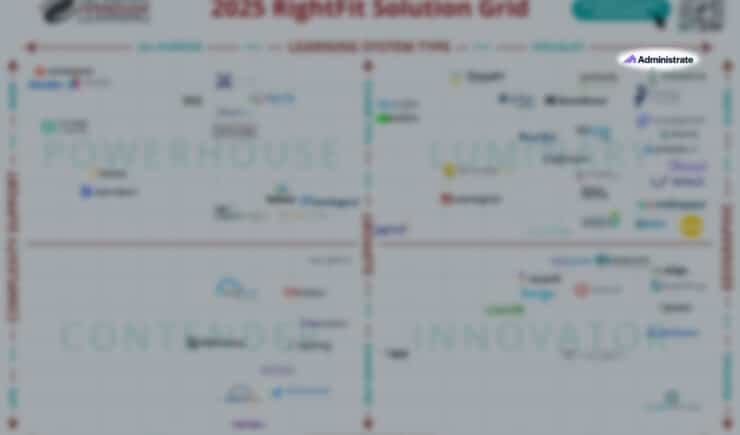Pro basketball player and businessman Michael Jordan famously once said, “Limits, like fears, are often just an illusion”. He was right too – our limitations are mostly self-imposed. That said, some are surmountable and some, well…we’d really quite like the ability to fly, but alas, we can’t all be Superman.
The same principle is true of the jobs we do and the tools we use to achieve our objectives. Recognizing their limitations and when it is opportune to evaluate new solutions makes solid business sense.
So, how do you currently manage your training? Perhaps you’re struggling with;
- Spreadsheets (you should check out our guide, “Why Spreadsheets Aren’t Enough to Manage Your Training).
- Software with another purpose that has been hijacked for training management.
- Multiple pieces of software and tools cobbled together.
- A legacy software solution you built yourself, many moons ago.
The cracks are probably beginning to show and you have an inkling that your outdated software is soon to be enjoying its long-overdue retirement. You might even be looking longingly at software solutions on the market; cooing over the wide range of integrations available, incredible reporting, process automation, and increased visibility afforded across the entire business.
Whatever your training woes, sometimes it can be hard to decide when is the right time for new software and, consequently, justify the investment of time and money. Within this post, we’ll help you identify some of the key indicators that crop up when change is required and also provide a top-level business case template so that you can start your journey toward training nirvana.
How to Identify When Your Existing Software is No Longer Fit for Purpose
How do you know if your existing software and systems are holding your business back? Well, scan this list and see if any of the pain points sound familiar. If even a handful ring true, you may well be in a position to start building a business case for change.
- You’re spending increasing amounts of time simply maintaining your software and systems.
- Everything is starting to run slower and your setup is more prone to errors – you make coffee, take a call, and catch up with colleagues and the software still hasn’t run that all-important data extraction.
- You spend an inordinate amount of time and resources simply inputting data – every new learner sign-up feels like a chore when they need to be added to multiple spreadsheets.
- Scaling your operation is becoming challenging – increased course and learner numbers are resulting in your software struggling to cope.
- There’s increasing discontent among the employees who use the software day-to-day. The troops are revolting!
- It’s becoming increasingly more difficult to onboard new employees and bring them up to speed on how the system operates.
- Lack of confidence in the figures and reports your software is generating – are those numbers really correct?
- Reporting from your software takes an increasingly long time.
- Worse still, the level of reporting and metrics you can evaluate with your software hasn’t kept pace with the wealth of new data you’re producing.
- Your software can’t integrate with any other learning tech and business systems – it lives an isolated life.
- Your software doesn’t allow your team to collaborate – one user must stop using it in order for another to log in or access the software.
- You’ve had to resort to introducing other tools to get the job done, that list is growing, and connecting those tools happens in a spreadsheet.
- All these separate systems and tools are not integrated, meaning data needs to be shared manually.
- If you’re selling training, the typical sales workflows and processes within your training business cannot be replicated within your software.
- When you diagram your actual workflow, it’s embarrassing just how many unnecessary steps there are in the process.
- You have concerns over the reliability of your software, which has started to impact what you ask of it – you’ve resorted to exporting data as a backup, just in case.
- You have concerns over the security of your software and the data contained within – does it meet the industry regulations?
Lots of nodding while reading the above? Don’t worry, you’re not alone and the road to new training software can be a pretty smooth ride if you plan ahead.
The Way Forward – Emerging Learning Tech
Perhaps you’re a trailblazer and your company has never used paid software solutions before. There’s every chance you may encounter some objections to a new, unproven to your organization, way of doing things. However, often these objections to new software can be grounded in assumption rather than fact. These assumptions can often be quashed by having a chat with your prospective software provider and really getting under the hood of the software you’re evaluating.
Perhaps you’re replacing legacy software you built internally? In which case, there’s a strong likelihood you’re thinking, “There’s no way that anyone is going to be able to interrogate our data, never mind migrate it to a new platform”. Chances are, there is a way and it’ll be a lot more straightforward than you expect. The hurdles you’ve got have been jumped before.
Fundamentally, regardless of your situation, building a strong business case for software change is paramount if you want buy-in from your colleagues. A strong business case for new software adoption should compare the estimated resources, schedule, and all associated costs, along with the benefits that it is expected to provide.
Often, the decision to purchase new software is made by a panel, sometimes referred to as a Decision-Making Unit (or DMU) within a company. That team may well have distinct roles and they could have a defined buying process too, so be sure to scope that out and adapt your business plan accordingly, before offering up a new solution.
It’s also worthwhile to note that some software companies, us included, have full professional service options for implementation – they’ll be able to consult on your business process and find the optimal way for you to use their software.
Handily, to kick things off, we’ve included a helpful business case template below.
Download our ‘Building a Business Case for New Software’ Template
Created by the training operations experts at Administrate, this workbook is designed to help you craft a positive and productive conversation about your technology needs. Its contents are curated from hundreds of conversations with large enterprises we’ve worked with during the evaluation and implementation phases of learning tech infrastructure. After completing this exercise, you’ll be prepared to begin this critical training operations change process with your team and with key decision-makers in your organization.






